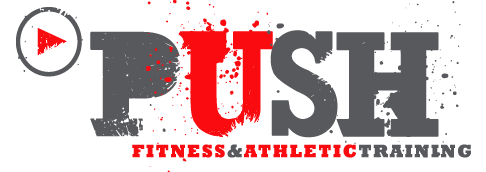
Hiking With and Without Back Pain El Paso
Table of Contents
Hike The Right Way
Dr. Alex Jimenez D.C. is a spine injury specialist at Injury Medical Chiropractic Clinic. He believes at its core, hiking is very beneficial to individuals with back pain. Hiking is a great activity for those with back pain because it increases muscular circulation improving soft tissue flexibility in the spine along with other muscle groups. Hiking helps strengthen spinal support muscles, improves flexibility and posture. The result is minimized pain on all levels. Walking on different uneven terrain/s contributes to improved balance and synergistic muscle activity of the back, legs, and core, and the small muscles of the feet. However, there is an incorrect way to hike with back pain. If done incorrectly hiking can have a negative detrimental impact on the body. Proper technique and form need to be followed. For example, a backpack that is improperly worn or not correctly sized for the body type could lead to imbalance. This could lead to improper form and injuries. Poor posture during a hike places added pressure on the:- Joints
- Spine
- Ligaments
- Tendons
Proper Backpack
A poor-fitting backpack will easily lead to increased back pain and even other ailments like shoulder and neck pain issues. A proper backpack should have the straps around the waist and across the back to evenly distribute the weight. Visit a sports/outdoor store to get correctly fitted for a backpack.Stretching Out
Getting and staying loose before and after a hike is very important. Before a hike improves circulation and loosens the muscles, in turn, reducing the stress on the joints. Stretching after a hike reduces muscle fatigue and soreness that can amplify and exacerbate back pain along with any other body soreness.Trekking Poles
Using trekking poles can be beneficial and quite helpful for individuals with back pain. Trekking poles can help avoid poor posture by keeping the body in an upright position. This helps reduce back pain experienced during and after a hike.Body Care
Hiking successfully means that the body needs to be fully functional and fueled before even stepping on the trail. Fueling the body with nutritious snacks like bananas, dried fruit, and trail mix will keep the body’s energy supply going. And above all stay hydrated with plenty of water. Also, focus the workout on developing upper body and core strength to prevent injury. Don’t forget to listen to what your body is telling you. Individuals with back pain need to listen to their bodies making sure not to overdo it, as well as, with any type of exercise, to adjust to your specific pain tolerance level. If unable to limit distance or time, then make sure to take frequent breaks. This will help avoid placing unnecessary strain on the spine.Recovery Time
The body needs a proper amount of time between hikes to recover properly. If there is still soreness and pain, WAIT until the body is no longer sore before trekking to the next trail. The amount a person can hike depends on the individual, overall strength, and how fast their body recovers between hikes. It is different for everyone.Assistance
As the journey commences, whether going for pain-free or less painful hiking, remember that it’s ok to have others help get you there. Getting help from a veteran hiker will definitely benefit proper form and posture. Hiking with an experienced partner can also help avoid poor hiking techniques that can worsen back pain or even create new injuries. Consult a local chiropractor, or spine, and pain specialist if you are unsure about hiking and are experiencing ongoing back pain. They will help develop a customized/personalized treatment plan with the focus on decreasing and controlling the pain and improving the body’s overall function to be able to participate in physical recreational activities.Car Accident Doctor & Chiropractic Rehabilitation
Post Disclaimer *
Professional Scope of Practice *
The information herein on "Hiking With and Without Back Pain El Paso" is not intended to replace a one-on-one relationship with a qualified health care professional or licensed physician and is not medical advice. We encourage you to make healthcare decisions based on your research and partnership with a qualified healthcare professional.
Blog Information & Scope Discussions
Our information scope is limited to Chiropractic, musculoskeletal, physical medicines, wellness, contributing etiological viscerosomatic disturbances within clinical presentations, associated somatovisceral reflex clinical dynamics, subluxation complexes, sensitive health issues, and/or functional medicine articles, topics, and discussions.
We provide and present clinical collaboration with specialists from various disciplines. Each specialist is governed by their professional scope of practice and their jurisdiction of licensure. We use functional health & wellness protocols to treat and support care for the injuries or disorders of the musculoskeletal system.
Our videos, posts, topics, subjects, and insights cover clinical matters, issues, and topics that relate to and directly or indirectly support our clinical scope of practice.*
Our office has reasonably attempted to provide supportive citations and has identified the relevant research study or studies supporting our posts. We provide copies of supporting research studies available to regulatory boards and the public upon request.
We understand that we cover matters that require an additional explanation of how it may assist in a particular care plan or treatment protocol; therefore, to further discuss the subject matter above, please feel free to ask Dr. Alex Jimenez, DC, or contact us at 915-850-0900.
We are here to help you and your family.
Blessings
Dr. Alex Jimenez DC, MSACP, RN*, CCST, IFMCP*, CIFM*, ATN*
email: coach@elpasofunctionalmedicine.com
Licensed as a Doctor of Chiropractic (DC) in Texas & New Mexico*
Texas DC License # TX5807, New Mexico DC License # NM-DC2182
Licensed as a Registered Nurse (RN*) in Florida
Florida License RN License # RN9617241 (Control No. 3558029)
Compact Status: Multi-State License: Authorized to Practice in 40 States*
Presently Matriculated: ICHS: MSN* FNP (Family Nurse Practitioner Program)
Dr. Alex Jimenez DC, MSACP, RN* CIFM*, IFMCP*, ATN*, CCST
My Digital Business Card



